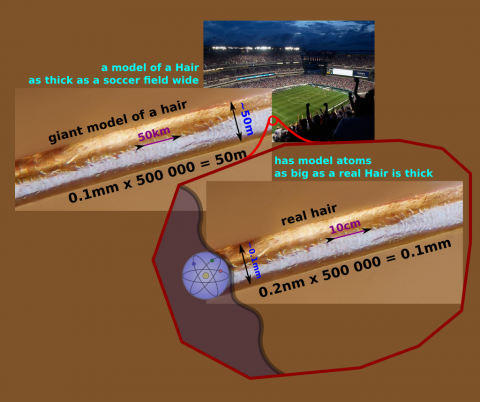Intuitively understanding the size of an atom

If you build a humongous model of a human hair with a diameter equivalent to the width of a soccer field (~50m),
then the model carbon atoms in that humongous model of a human are pretty much exactly the size of a human hair (~0.1mm).
The carbon atoms in the real hair (and everywhere else) are about ~0.2nm in diameter.
It's the same ratio!
- 50m / 0.1mm = 500 000
- 0.1mm / 0.2nm = 500 000
See?
Why this works
Unlike other comparisons this for once works because
the size of a hair and the size of a soccer-field both
still fall into the range of our everyday human experience.
What not to do
Shift one side of the comparison a bit (like making model atoms the size of marbles ~1cm) and
the other side falls way out of human everyday experience (model hair 5km diameter).
The comparison becomes completely useless as a means for intuitive understanding.
Also choose one magnification level and stick with it for as much as possible.
Do not jump around with magnification levels wildly.